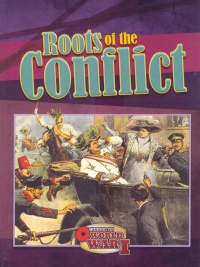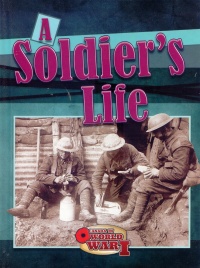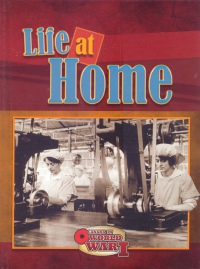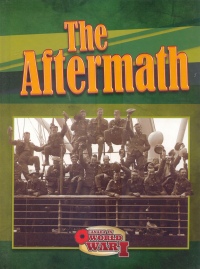| ________________
CM . . . . Volume XX Number 23 . . . . February 14, 2014
excerpts:
August 2014 will mark the hundredth anniversary of the beginning of World War I, and, under the authorship of Simon Rose, Weigl Educational Publishers has assembled an excellent five volume series entitled "Canada in World War I". It is important to note the word Canada in the series' title as the books, while about the war, focus particularly on Canada's role in that war and the impacts the Great War had on Canada both during and after the conflict. Because each 32 page book is part of a series, it is not surprising then that the volumes have a similar structure which consists of 13 two-page "chapters", a one-page 10 item "Test Your Knowledge" content recall quiz (with answer key), a one-page "Further Resources" section containing four websites, and a closing page that is shared by a glossary and an index, with the former providing definitions of 17 to 22 words that had appeared in bold print in the main text. The books share some internal similarities as well, with one being a two-page timeline which is specific to each book's contents. For example, the timeline for Roots of the Conflict spans the period from 1870-1914 while that of The Aftermath covers 1918-1922. Another common feature is a two-page biography section that identifies six individuals, usually Canadians, who were significant in terms of that book's contents. Battles biographical section, for instance, is titled "Canadian Commanders" and highlights six generals who were in charge of Canadian troops in Europe's battlefields. That same section in A Soldier's Life is headed "Heroic Canadians", and it identifies a half dozen brave members of Canada's military, including nurse Helen Fowlds. A "By the Numbers" page also appears in each volume, with the statistics it provides being germane to the specific book's contents. Consequently, Roots of the Conflict presented the strengths of the opposing forces during World War I while Battles displayed Canadian battle statistics in terms of killed, wounded or missing. Underlining the fact that these five volumes are aimed at a school market is the inclusion of a "suggested" project that appears in each just before the "Test Your Knowledge" page. That for The Aftermath reads as follows.
That "assignment" is then followed by a sample concept web, with that for The Aftermath being labeled "PLANNING A BATTLE". All of the books are generously illustrated with period photos, and each contains one or more maps appropriate to its subject matter. Small text boxes, apart from the main text, add additional information. For example, in A Soldier's Life, a text box titled The Canadian Soldier provides the detail that:
Paying attention to the opening "chapter" in each book is most important as its contents are then expanded upon in the rest of the book. In the first excerpt above, taken from Roots of the Conflict, author Rose references the commonly described "cause" of World War I, the assassination of Franz Ferdinand, but he uses the rest of that page to briefly introduce the "real" causes: alliances, nationalism, imperialism and colonization. These causes are then expanded upon in the remainder of the book. In Battles, Rose particularly focuses on Canada's military contributions to the war. especially in terms of soldiers (as opposed to sailors or airmen), and he highlights Canada's significant participation in four battles: the Second Battle of Ypres (1915), the Battle of the Somme (1916), the Battle of Vimy Ridge (1917) and the Battle of Passchendaele (1917). Although Newfoundland was not then part of Canada, Rose does not overlook the Newfoundland Regiment's participation. As the title of A Soldier's Life implies, this volume attempts to give 21st century youngsters an idea of what it was like to be a soldier in the trenches of the Western Front. The contributions of Canada's navy and fledgling air force are also considered as are those of the some 3000 nurses who served in the Canadian Army Medical Corps. Life at Home examines a number of ways in which the war brought changes to how Canadians lived, and it treats subjects such as the introduction of income tax, rationing, conscription, women in the workforce, voting rights for women, and the internment of enemy aliens. Finally, The Aftermath considers some of the longer term consequences of World War I for Canada, including the economic, political and social impacts. This series is an excellent introduction to, and overview of, Canada's participation in World War I. Overlap in content between/among the volumes is minimal. If budget is a concern, consider purchasing Roots of the Conflict and The Aftermath in hardcover and one or more of the other volumes in paperback. Highly Recommended. Dave Jenkinson, CM's editor, lives in Winnipeg, MB.
To comment
on this title or this review, send mail to cm@umanitoba.ca.
Copyright © the Manitoba Library Association. Reproduction for personal
use is permitted only if this copyright notice is maintained. Any
other reproduction is prohibited without permission.
NEXT REVIEW |
TABLE OF CONTENTS FOR THIS ISSUE
- February 14, 2014.
AUTHORS |
TITLES |
MEDIA REVIEWS |
PROFILES |
BACK ISSUES |
SEARCH |
CMARCHIVE |
HOME |




